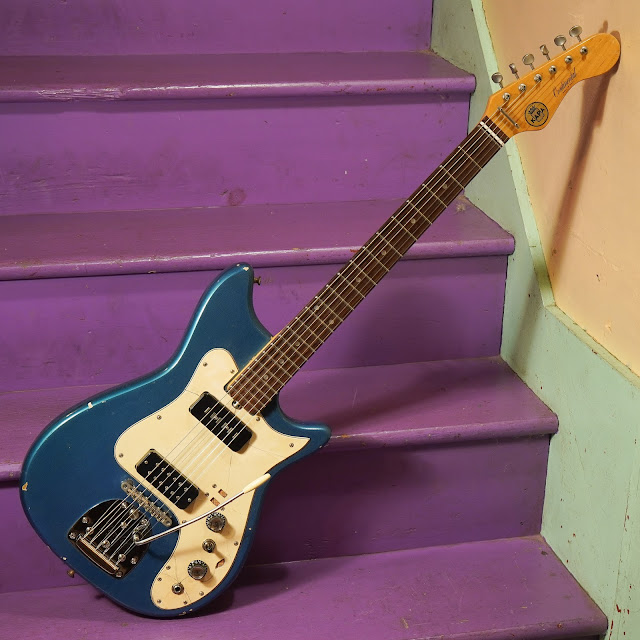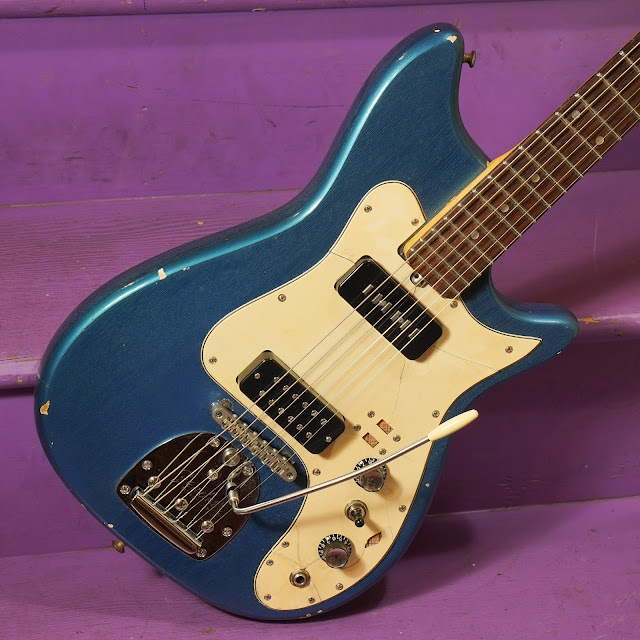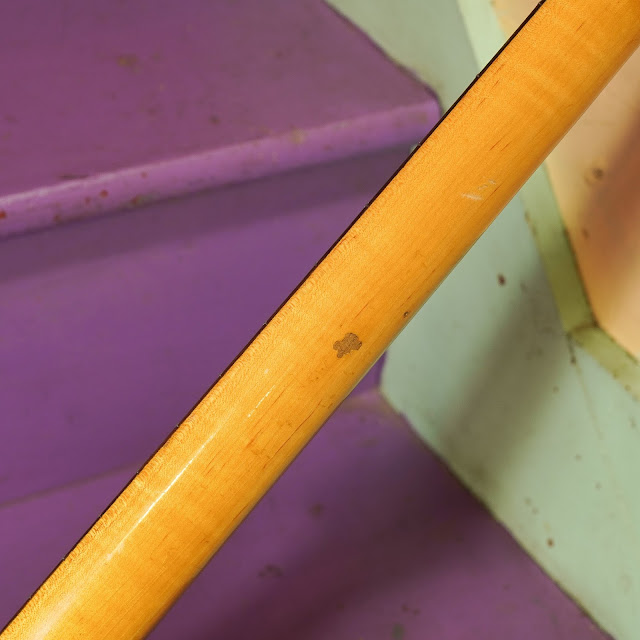1960s KAPA Continental Modded Electric Guitar
Update August 2021: I fixed this up in February but the owner needs to part with guitars so it's now available. I updated the photos, video, and description.
I might have worked on a Continental or two (or 12?) in my time. I think they're great guitars. Once you fix them up properly, they handle (after a fashion) like a "lost Fender model."
KAPAs were built in Maryland from US necks and bodies and German-import hardware and pickups. They're totally odd machines. The necks tend to be very stable -- staying straight over time whereas plenty of other "budget" makes from the time definitely do not -- and the bodies all get the lovely nitro-finish "weather-check" one associates with finishes on old Fenders and Gibsons.
The height of the neck over the body feels very European, though. Hofner, Framus, EKO, and other Italian and German brands come to mind. I suppose some Rickenbackers are similar, though, to be honest, geometry-wise.
This particular guitar arrived as a husk -- body, wrecked pickguard, original vibrato, and neck with original (garbage) tuners. My job was to fix it all up, refret the board, install new pickups and a new wiring harness, rout and install a US-made Fender Jazzmaster vibrato, fit a new Gotoh "aged" bridge and tuners, and set it up.
Said replacement pickups are an Artec/quality Korean "staple P90" pickup at the neck (these are like DynaSonics in construction, really) and a GFS (also Korean-made) Soapbar 180 humbucker at the bridge. With this setup and this guitar's construction, one can dial-in sounds from surf to country to rockabilly to straight-up rawk. I like it in the surf category best, though. This thing sounds outrageous with a ton of reverb on it.
The necks on these are slim and fast and have a tight radius on the boards. Combined with a lightweight body, these really do feel like you're "playing a sports-car" in a way. It's like if you could play an early-variant 'Cuda -- like a '64-'66.
On a side note: how do you like the humpty-dumpty pickguard? It was fun to see if it would hold together with a bunch of aluminum-backed tape while I was routing-out the "soapbar" pickup holes. Oh my. Also note the way I backed the missing chunks of pickguard with some plaid playing-card backing material.
Repairs included: board plane and refret with medium-large stainless wire, install of a Fender Jazzmaster whammy (much better than the original unit), new Gotoh relic'd bridge, new Gotoh relic'd Kluson-style tuners, new wiring harness (500k pots, low-value cap, Switchcraft jack, 3-way selector), rout and install of new pickups, setup.
Body wood: unsure - poplar?
Bridge: Gotoh ABR-style
Fretboard: rosewood
Neck wood: maple
Pickups: 1x Artec-made Staple P90, 1x GFS Soapbar 180 humbucker
Action height at 12th fret: 1/16" overall (spot-on)
String gauges: 52w, 38w, 28w, 20, 16, 12 custom set
Neck shape: slim C
Board radius: tight ~7-10 compound radius
Truss rod: adjustable (plenty of adjustment: it's almost loose)
Neck relief: straight
Fret style: medium-bigger
Scale length: 25 1/4"
Nut width: 1 11/16"
Body width: 12 1/2"
Body depth: 1 1/2"
Weight: 7 lbs 9 oz
Condition notes: first-off, it's been heavily modified. The original parts, however, are in good order for their age. The body has scratches and some paint chipping, but the metallic-blue paint has gorgeous crazing/weather-check all over. The neck looks great as well and has some light flamey-figure to its rear. The pickguard is not original to the guitar but is an original Kapa pickguard. It's cracked-up like crazy, however, though I've stabilized it with a bunch of foil tape on its rear. Bridge, pickups, knob, wiring harness, whammy, and tuners are all non-original but excellent quality.
The biggest thing to know about this guitar is that the neck has a hair of backbow at the nut when not strung-up and it likes heavier gauges. I have a custom set of strings on it but it definitely needs at least 50w-11s to keep the neck "straight" at pitch. With 46w-10s it'll rattle just slightly if you pick hard in first position, though light-touch players will never know the difference. I'm making this sound dramatic but it's not...! This guitar handles and sounds like a thoroughbred, boutique-style instrument.
The last note is that the whammy does not travel fully as far down as a normal Jazzmaster unit because the guitar itself has a thinner body depth and the whammy grounds-out in the cavity. It still leaves plenty of travel for classic warble effects, though.



















Comments
Great old guitar.